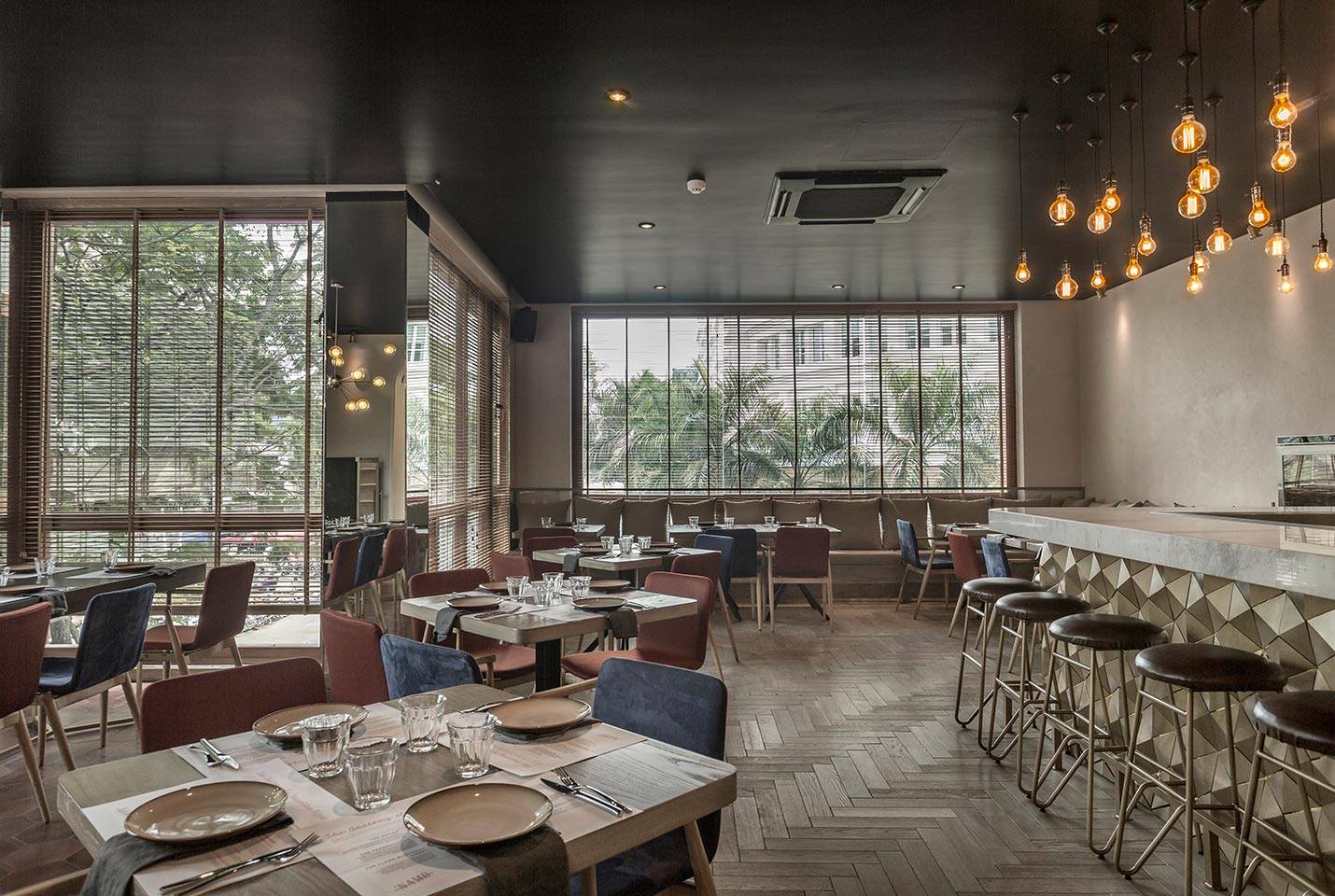Area: 360m²
Dist. 1, Ho Chi Minh City, Vietnam
Namo is a high-end Neapolitan-style pizzeria in the centre of Ho Chi Minh City (otherwise known as Saigon). Using only authentic, high-quality ingredients, many of which are sourced from Naples itself, Namo’s owners wanted to create a contemporary Italian restaurant with an artisanal touch.
Located on Hai Ba Trung Street—known for its upmarket restaurants, shops and hotels—the two-storey building with mezzanine (previously an Indian restaurant), sits opposite the Park Hyatt hotel and Saigon’s historic opera house.
The owner’s specifications called for a complete overhaul of the building, including the relocation of stairs, and the construction of a ground-floor open kitchen, a preparation kitchen on the first floor, and two bars.
Mirroring Namo’s focus on well-sourced, all-natural ingredients, the colour and texture palette features natural stones, woods, and warm metallics.
Like the menu, the atmosphere is homely and encourages sociable dining. On the mezzanine level, for example, a shelving installation displays books, ornaments and curiosities, giving the feel of a private abode.
Boasting floor-to-ceiling windows on each floor, the movement of this energetic Saigon street becomes part of the interior design. In the same way, internal features such as the recessed lighting system on the first floor become part of the external appearance.
By using commonplace materials in unexpected ways, a feeling of theatricality is established. While fused by a single design concept, no two floors are the same, from the casual ground-floor counter area to the top-floor bar and event space. Linking each level is a steel staircase rendered in concrete and encased in wood composite panels.
Commonly hidden beneath plaster or upholstery, this low-cost particleboard boasts surprisingly rich tones of gold and copper. Slotted into the seams between each panel, brushed brass dividers turn this seemingly throwaway material into an elegant tableau of colour.
Around the ground-floor dining counter, fishbone wood flooring flows into hexagonal tiling (supplied by Viet Tiles) in a more natural, more gradual progression.
Most of the materials and furnishings were sourced within Vietnam, the main exception being the custom-built pizza oven. Handmade in Naples by the world-renowned Stefano Ferrara, it provides a striking centrepiece, visible from the street outside. The oven has now become as recognisable as the restaurant itself.
Through the careful placement of mirrors and lighting, alongside light woods and slimline furniture, the more confined areas (such as the mezzanine) have been opened up and utilised to their best potential. Likewise, the number of seats, the functionality of the kitchen and bar components, and the iconic views to the outside have all been amplified despite the relatively small footprint of the building.
While rustic Italian cuisine and modern interior design may appear to inhabit very different worlds, by taking inspiration from the owner’s acute attention to detail, the two have been combined to create a memorable yet informal dining experience that is consistent in every sense.
